Dinosaur fossils in a valley untouched since the Romans - North Leigh to Ditchley, Oxfordshire
From a Roman villa to a giant Bronze Age burial mound, the sleepy folds west of Blenheim also contain the world's first dinosaur fossils
I explore the weird and wonderful in the English landscape and write about it every couple of weeks. If this sounds like something that would interest you, why not subscribe? Or, if you’re already subscribed, consider recommending to a friend to whom it might also bring joy?
On a peaceful loop in the River Evenlode, in a diminutive valley between low pillowy hills, sheep graze by the river, on the thin floodplain fringed by rushes. The water hollows out the bend; eroding the ochre land away so tightly you wonder whether it will soon be an oxbow lake: that thing you heard about in school, but have never seen. Perhaps the course of the river has changed, since the people who lived here in the centuries before the Roman invasion left their Iron Age pottery. It feels like not a lot else has.
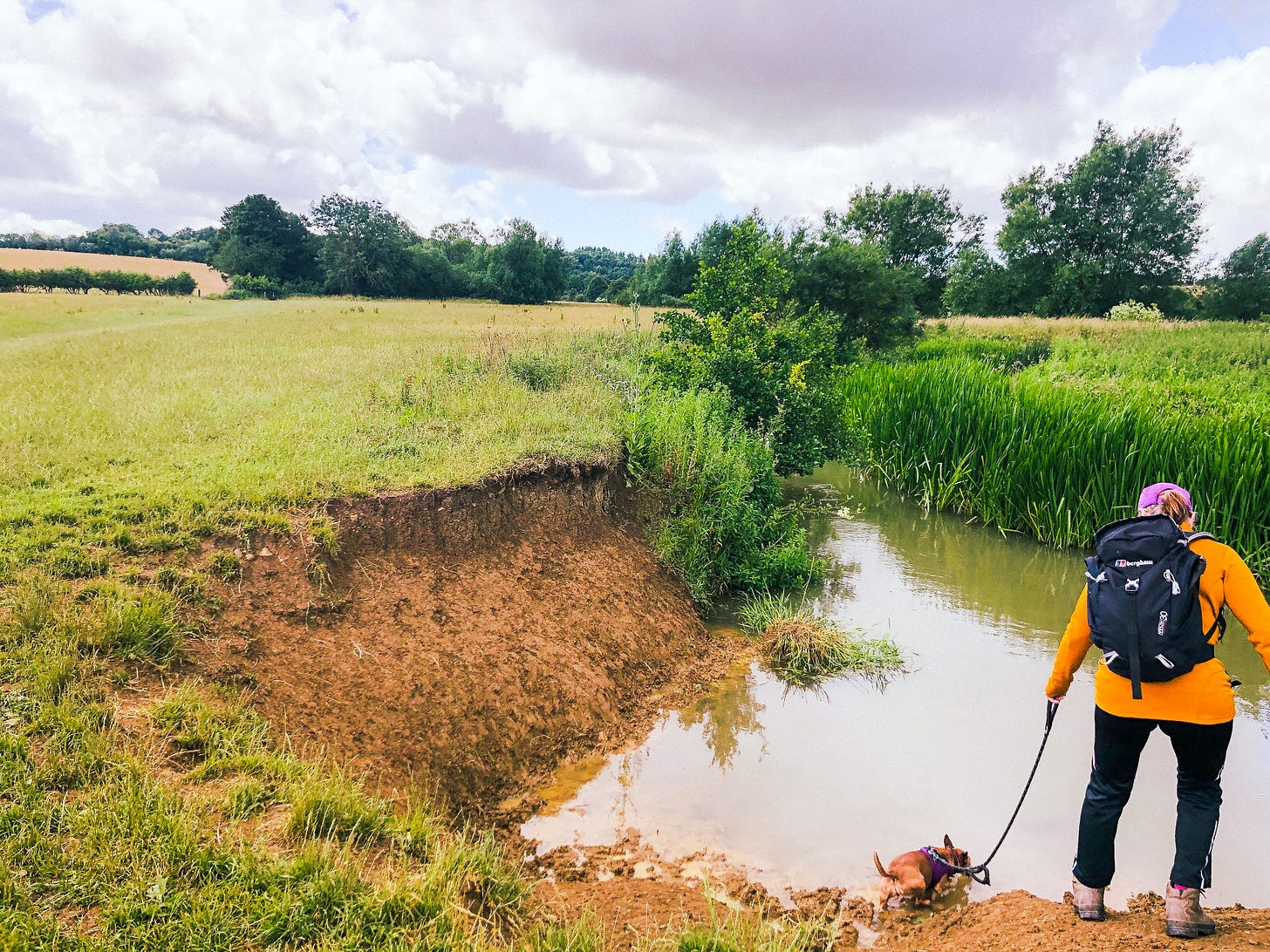
At the River Evenlode for a drink.
The Romans must have thought they lucked out when they discovered this rich and tranquil part of Oxfordshire, much as retirees and professionals escaping London enjoy it today. It’s easy to picture them wandering (the climate then slightly drier and warmer) as if through Tuscan hills, covered in vineyards and olive groves. This area is dotted with the remains of Roman villas, roads and enclosures; presumably large farming estates, of which North Leigh is by far the best preserved: the others having been destroyed in centuries hence by over-enthusiastic farmers or souvenir hunters.

The remains of the Roman villa at North Leigh.
The truth is that the people who lived here probably weren’t that different to those who left their smashed pottery before. In the early 1st century AD this house was built, probably home to a leading member of the native population, co-opted into the Roman hierarchy. The Romans had an early genius for multiculturalism: assimilating local traditions in a bid to assure Britons they were just like them. They proclaimed Bath Aquae Sulis after the Celtic goddess, identifying her with their goddess Minerva. The most prominent of these was the British King Cogidubnus, who lived at the splendid Fishbourne Palace (on the brink of permanent closure to the nation due to the COVID-19 pandemic — please donate if you can), also a fond character from school Latin textbooks.
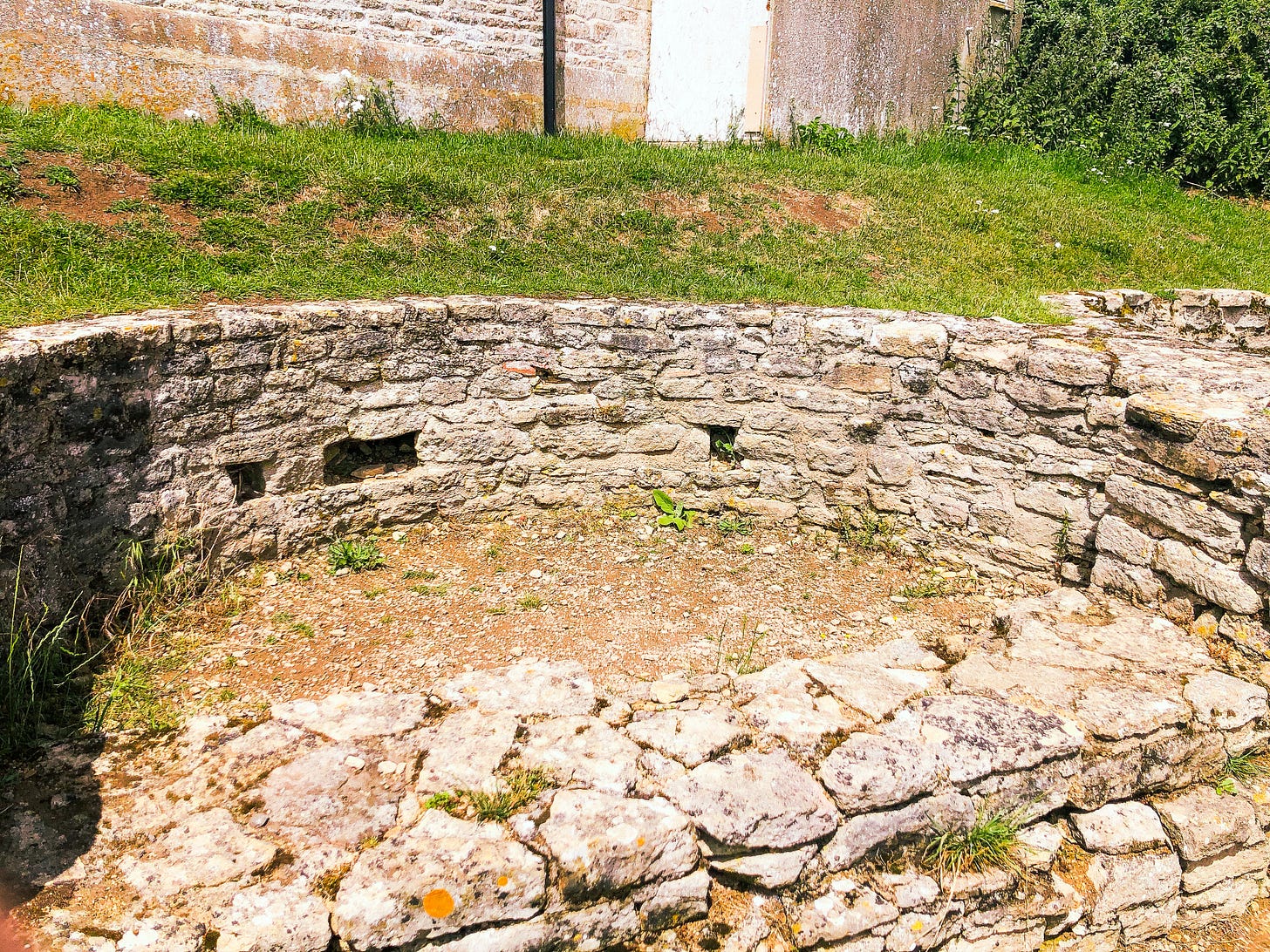
The bathhouse’s curving wall.
The villa was quite imposing: much solid stone walling remains, and below floor level, hypocausts are well preserved. At its height it incorporated no less than four bath suites and 16 mosaic floors. In the northern corner the walls of the bathhouse bulge, suggesting the many-temperatured pools. In a small building — now closed — is preserved a large geometric mosaic, believed to be from the dining room.
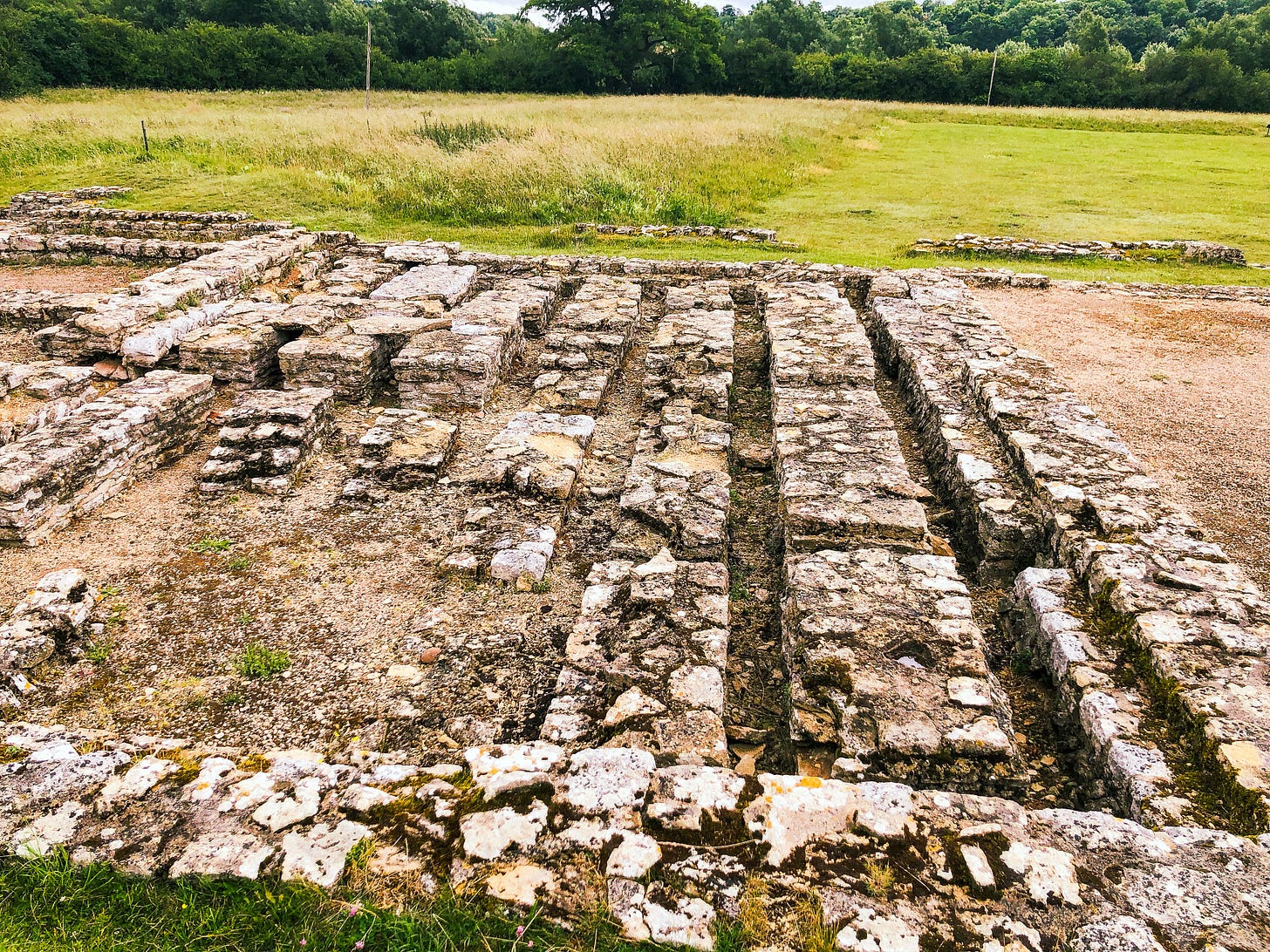
An impressive hypocaust — used for underfloor heating.
It’s quiet here, now: there are no power lines and no roads. It always seemed strange to me that in our great country houses — Blenheim, Chatsworth, Stowe — as in so much of our culture and art, we kept trying to recreate the Classical age; that is until I realised that, until the Industrial Revolution, the Romans were basically the most advanced civilisation in the world. Indeed, probably the only thing that’s really changed in this valley since then is the London train screeching along the the ridge opposite.
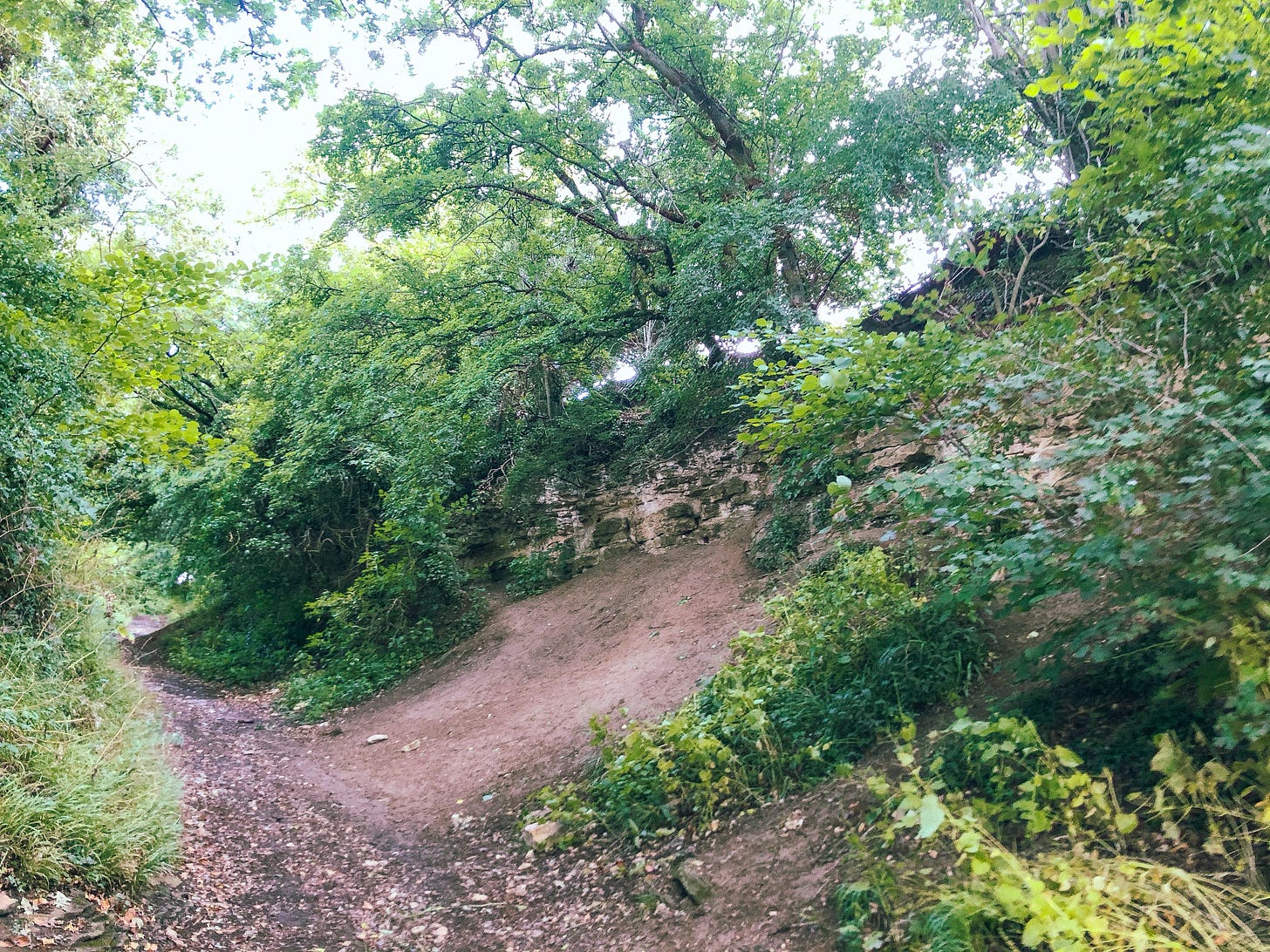
Brook Lane, below the limestone scarp where the world’s first scientifically described dinosaur fossils were found.
We cross the river and climb the other side up an ancient holloway — Brook Lane — up to Stonesfield, a village so named for its ‘slate’; not, in fact, slate at all but a roofing material common throughout Oxfordshire. On one side, there’s a small cliff where the land falls away; a sign board informs us that it was here that the first ever scientifically described dinosaur fossils — a megalosaurus jaw— were discovered in the early 1800s. A man passes us with his two dogs, a little Jack Russell and a lame boxer. “There’s something wrong with a nerve in her leg,” he says, as she lopes along, “but it doesn't stop her having a whale of a time.”
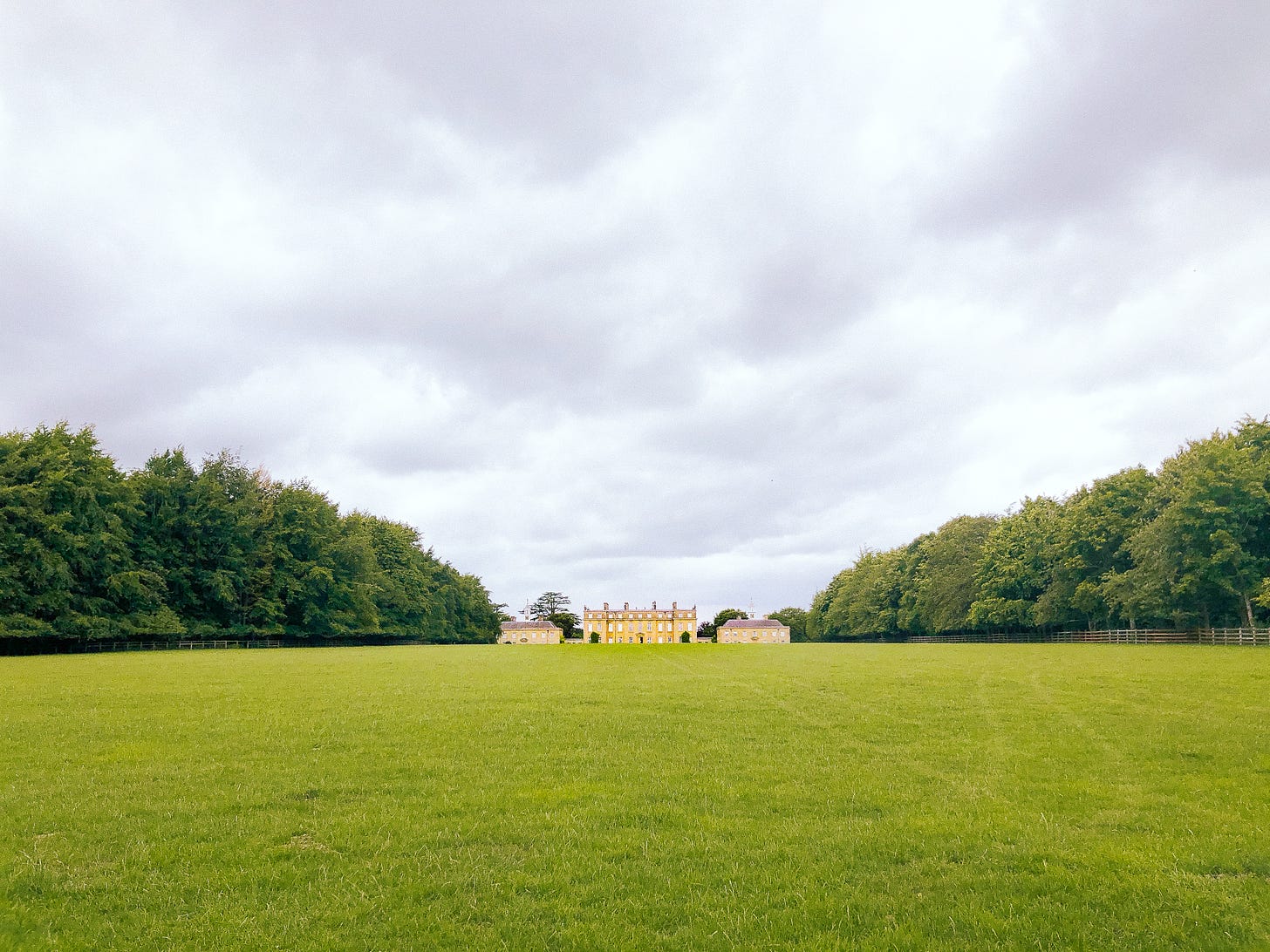
Approaching Ditchley House.
Walking out of the village, we attempt to find a Bronze Age tumulus on a farm but are chased off by a particularly militant owner-occupier who appears to be unaware he is sitting on a scheduled monument. We are more rewarded as we emerge through a vast conifer clearing to the Ditchley estate, which appears gleaming from a magnificent sweep of grass, framed by trees, like something from a Jane Austen adaptation. Perhaps overshadowed by Blenheim nearby, and mainly serving as an institute for public policy, we’d never heard of it. Home to the famous Ditchley Portrait of Elizabeth I (the one where she’s standing on the world), it was playing host to Michael Gove for a speech that day. A remaining section of Grim’s Dyke — an Iron Age ditch and dyke fortification that encloses around 70sq miles of the surrounding countryside — passes through the estate.

The giant Bronze Age round barrow on the Ditchley estate, surrounded by planted trees.
We turn in the opposite direction, towards a vast Bronze Age burial mound: the rather imaginatively named Round Clump. Now planted with trees for effect, it’s a mound 30m wide, with a ditch almost 9m across and 1.5m deep. I’ve never seen a round barrow this big. It doesn’t show any evidence of having been excavated. Just imagining the effort required to shift this quantity of earth is so incredible, you can’t help wondering what must be hidden beneath. I take a photo of my parents standing on it: the living on top of the dead spirits.
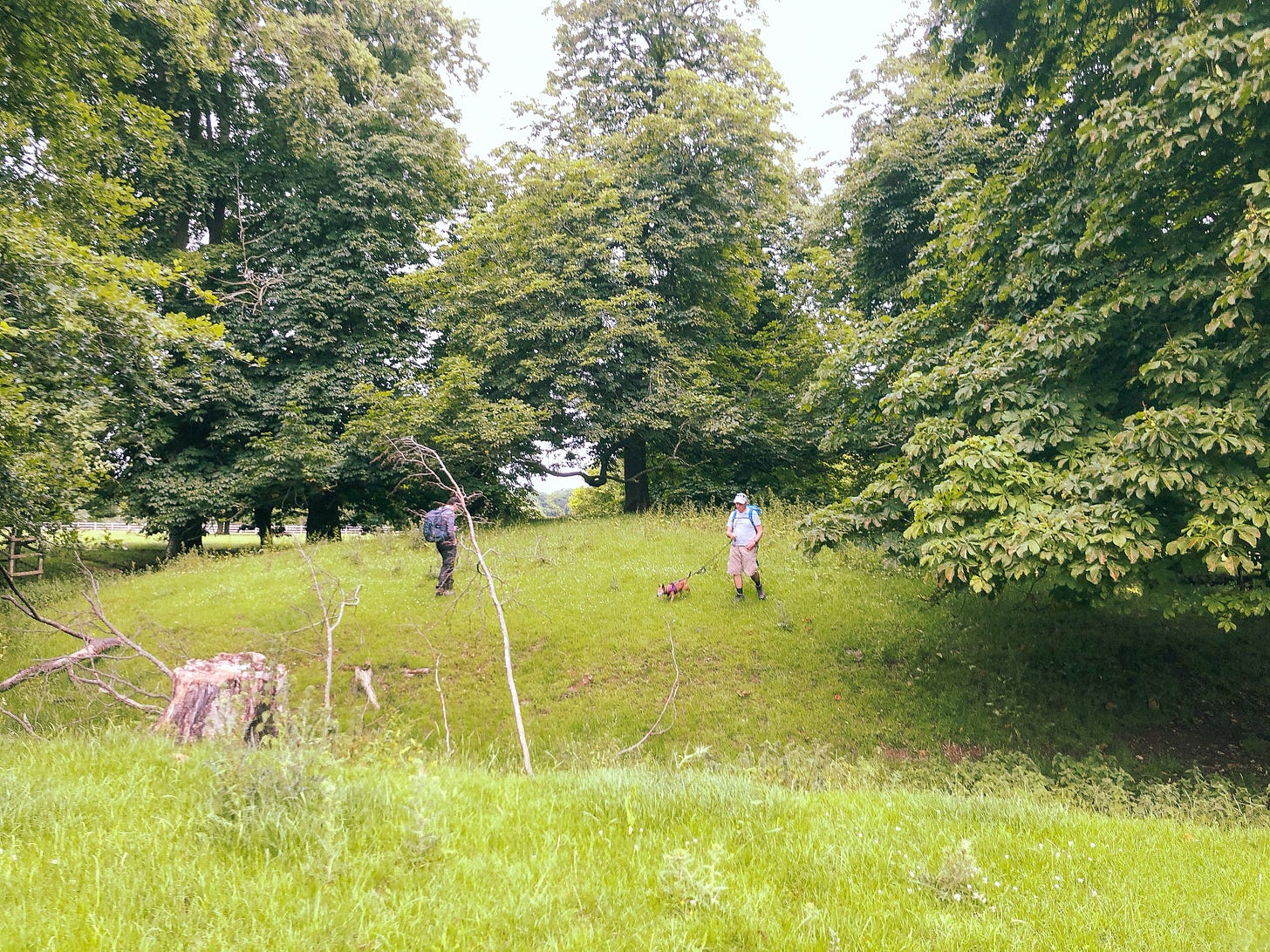
The burial mound up close.
Lashed by a sudden rain shower, we finish the walk in a copse near where Asterleigh, an abandoned mediaeval village, is meant to be. It’s hard to see through the trees, but we find one raised platform of a large building, possibly a church. The rest is too overgrown for our untrained eyes to make out anything. And besides, my companions are weary. We walk back to the cars nearby, mellow and dripping, ready for the drive home.
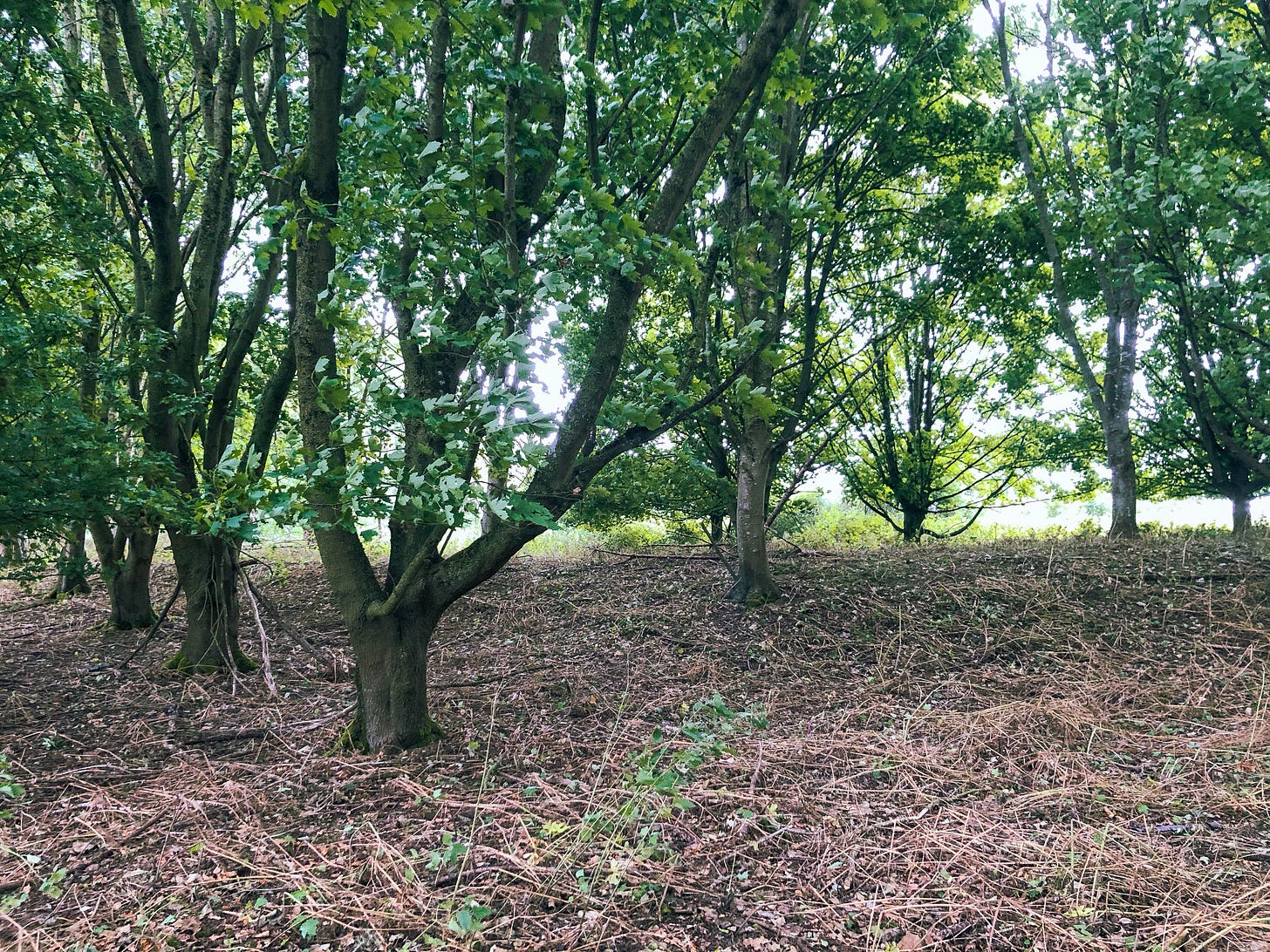
Raised platform of a large building, possibly a church, visible between trees at the abandoned mediaeval village of Asterleigh.
If you’d like to follow this walk you can find the full route we took here.
Cultural titbits:
Book: Prehistoric Avebury by Aubrey Burl. Though challenging to get your hands on, this incredible study of Britain’s greatest stone circle (one of my favourite places) and the people who built it goes much further than other resources in painting a picture of Neolithic tribes, their way of life, and the conjectural uses of the circles based on the archaeological evidence. The sheer scale of the achievement — ditches up to 10m deep, dug by antlers — are revealed in photographs from earlier excavations. In a particularly moving final chapter, Burl surveys the evidence to allow his imagination to rove over who these people might have been: farmers with proto-pagan festivals, traces of which survived into Celtic calendars and myth. People with rituals around sun, moon and seasons who danced, celebrated and revered the bones of the dead.
I’m considering doing a shorter interstitial update in my ‘off’ weeks — are there any suggestions for what you’d like to see? My current ideas include meditations on past places I’ve been, or other short articles/essays/meditations on other, more general place-based topics. Let me know any suggestions or thoughts for the types of content you’d like to see and I can add them to the list!
As usual, in general please send me your comments, feedback and recommendations for places to visit… is there somewhere in your area that deserves a little more attention? You can comment directly on this post, or reach me on Twitter or Instagram: I’d love to hear from you.
If you enjoyed reading, please consider subscribing, or sharing this newsletter with a friend.
Sincerely,
Ruth
For much historical background I am indebted to the English Heritage page on the history of North Leigh Roman Villa.



